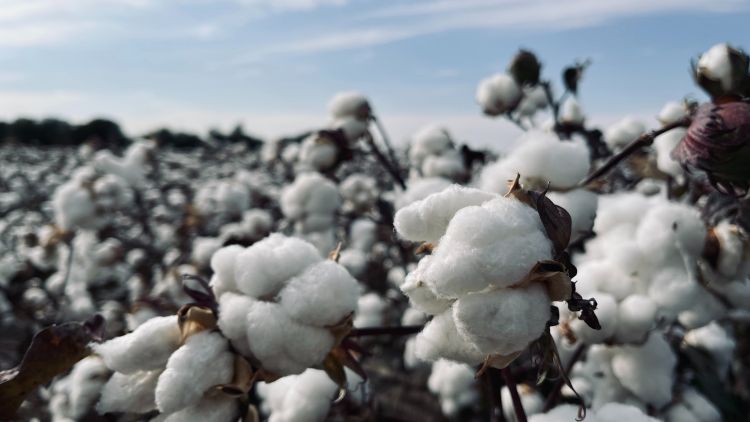Cotton’s common threads entwined in new exhibition

New collaboration with Lotherton Hall tells story of cotton and its remarkable cultural impact on India and Europe.
Cotton Connections exhibition at Lotherton Hall explores the different stories about cotton and how this simple fibre connects us with a global industry and with a history that goes back over 300 years.
The exhibition is the result of an exciting partnership between the Lotherton Hall and the School of Design’s AHRC funded project, Cotton's Hidden Voices.
Speaking about the exhibition, Dr Mark Sumner, Lecturer in Sustainable Fashion, said, “Cotton Hidden Voices considers the fashion industry from the perspectives of the workers that produce the clothes we all wear.
“We have been able to explore the journey our clothes make through all the layers of the fashion supply chain using stories from these workers. The farmers, graders, spinners, knitters and even the worker who irons the t-shirts before they are packed have told us about their experiences of working and living in the fashion industry.
The farmers, graders, spinners, knitters and even the worker who irons the t-shirts before they are packed have told us about their experiences of working and living in the fashion industry
“With these stories we have been able to better understand the complex nature of fashion and what sustainable fashion could look like for our clothes and these workers. The exhibition is one of a number of activities we are using to connect fashion consumers with the people who our clothes.”
Objects on display include a muslin dress fashioned in the early 1800s. Made of Indian muslin, the dress features a European trademark, illustrating how cotton harvested in India was exported and used by European dressmakers and tailors.

Vanessa Jones, Leeds Museums and Galleries assistant curator of costume and textiles, said: “Cotton has played a central role in diverse cultures and communities around the world for thousands of years, shaping everything from economies and international relations to fashion trends and identities across generations.
“Exactly what cotton has meant to people living in those different cultures has also varied quite spectacularly and profoundly. Those involved in its harvest and production have seen first-hand the massive and intensive industry which has grown around it, whilst those at the other end of the thread have seen the beautiful and delicate creations for sale on high streets all over the world.
Cotton has played a central role in diverse cultures and communities around the world for thousands of years, shaping everything from economies and international relations to fashion trends and identities across generation
Cotton Connections has been co-curated with The Cotton Detectives, a group of 14-24-year-old volunteers based at Leeds Art Gallery, with support and research from the University of Leeds.
Councillor Jonathan Pryor, Leeds City Council’s executive member for economy, culture and education, said: “Leeds has a long, rich and fascinating history as an important centre for textile trade and production.
“Through research and exhibitions like this one, we have the opportunity to add more depth and context to that story and to explore how the city’s journey links to that of other cities, cultures and communities around the world.”
Cotton Connections: From India to the High Street will be at Lotherton from March 31 until October 15, 2023. A range of events and talks will also accompany the exhibition.
For more details, please visit: Cotton Connections: From India to the High Street - Lotherton (leeds.gov.uk)
Main photo by Artem Beliaikin on Unsplash. Cotton image by Sze Yin Chan on Unsplash




